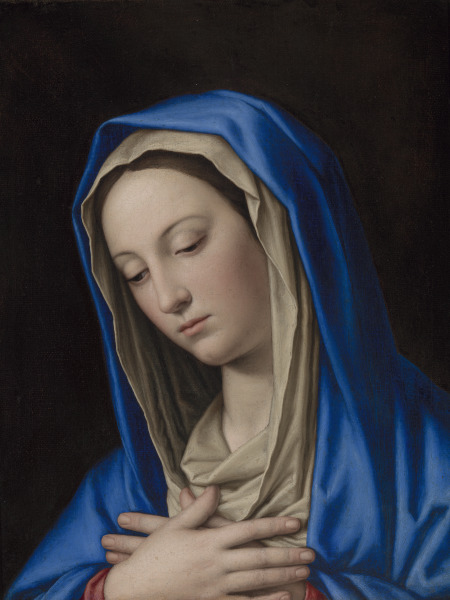
Madonna (Primary Title)
Giovanni Battista Salvi da Sassoferrato, Italian, 1609 - 1685 (Artist)
Unlike most Roman artists of the mid-17th century,
Sassoferrato rejected the fashionable Baroque style
that relied on unbridled compositional flourishes to
convey religious fervor. While other artists rivaled one
another in the exuberance of their paintings, he carried
on with the understated compositional serenity and
austere figuration favored by Italian Renaissance
artists of the previous century. His decision to frame
the Virgin Mary in bust format allowed him to focus
his composition on an intimate representation of the
pivotal moment that transformed her life and made her
an emblem of purity and religious devotion. According
to the New Testament account, the angel Gabriel
visited Mary to announce that she would conceive the
son of God, Jesus Christ, through a virgin birth. This
narrative, known as the Annunciation, was a frequent
subject of the Roman Catholic Church’s art that
focused on Mary and a favorite among artists since the
Middle Ages. Her hands are crossed over her heart in a
gesture conveying her acceptance of her imminent
conception.
The Jordan and Thomas A. Saunders III Collection
Some object records are not complete and do not reflect VMFA's full and current knowledge. VMFA makes routine updates as records are reviewed and enhanced.

